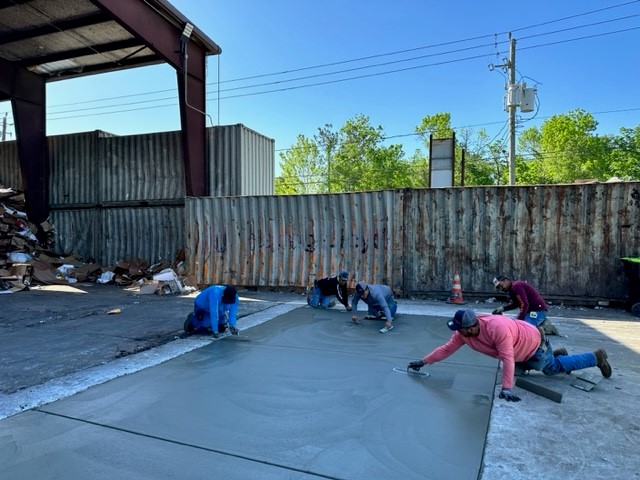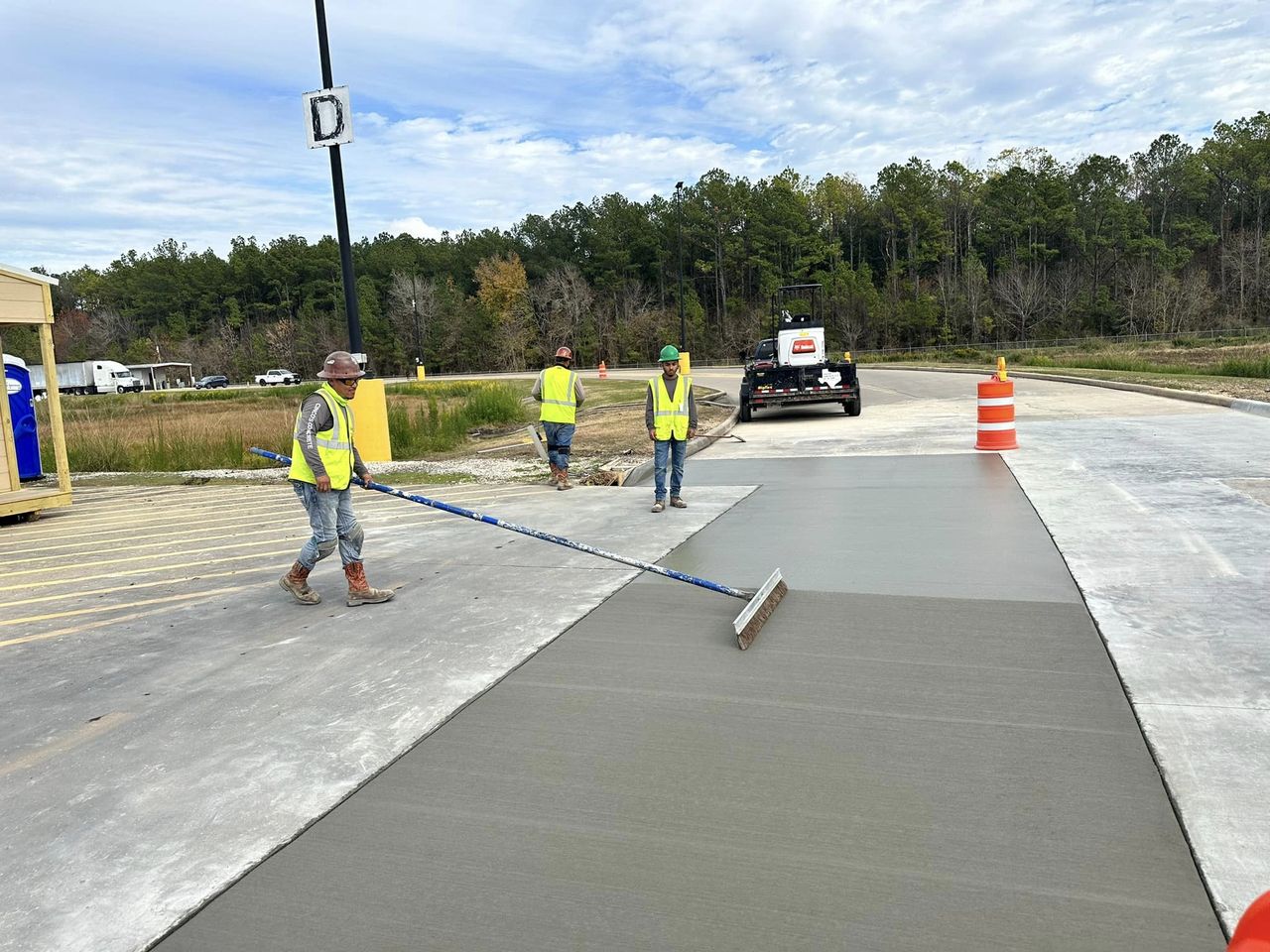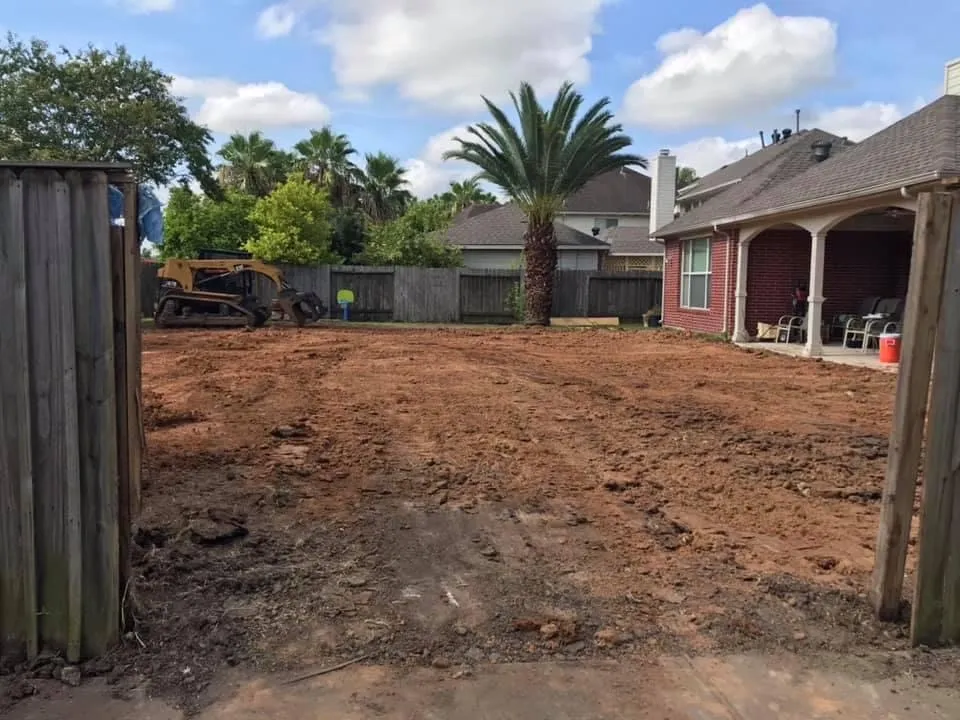
What does a concrete contractor do?
What Does a Concrete Contractor Do? Beyond Just Pouring and Finishing
When you envision a concrete contractor, you might picture someone pouring a gray, wet mixture onto the ground and smoothing it out. While that's certainly a part of the job, the reality of what a professional concrete contractor does is far more extensive, intricate, and specialized.
A concrete contractor is a skilled professional or a team of experts dedicated to the planning, installation, repair, and maintenance of all things concrete. Their work is foundational – literally and figuratively – to countless residential, commercial, and industrial structures.
For homeowners in Houston, Humble, Spring, Atascocita, and the surrounding Texas areas, understanding the full scope of a concrete contractor's role is crucial. It helps you appreciate the investment you're making and recognize the expertise required for durable, long-lasting results.
At Cincos Concrete, with over 20 years of experience serving our community, we perform a wide array of services. We know that behind every perfectly finished patio or sturdy foundation lies meticulous planning, precise execution, and a deep understanding of concrete science.
This article will delve into the multifaceted responsibilities and diverse services offered by a professional concrete contractor, highlighting why their expertise is indispensable for your next project.
The Core Function: Transforming Vision into Durable Reality
At its heart, a concrete contractor's primary function is to transform a client's vision for a concrete structure into a tangible, durable reality. This involves far more than just manual labor. It's a blend of technical knowledge, problem-solving, and craftsmanship.
They are the specialists who understand concrete's properties, how it reacts to various conditions, and the best practices for its installation and maintenance. Their expertise ensures that the concrete structures they build are not only aesthetically pleasing but also structurally sound and built to last.

From initial consultation to final cleanup, a reputable concrete contractor manages the entire lifecycle of a concrete project. This comprehensive approach is what sets them apart from a general handyman or a less specialized laborer.
Phase 1: Planning and Pre-Construction (The Foundation of Success)
Long before any concrete is mixed or poured, a significant amount of work goes into planning and preparation. This phase is critical for preventing future issues and ensuring project success.
Initial Consultation and Project Assessment
Client Communication: The contractor first engages with the client to understand their needs, vision, and budget. This involves discussing the purpose of the concrete, desired aesthetics, and functional requirements.
Site Evaluation: A thorough on-site assessment is crucial. They examine the existing conditions, including soil type (especially Houston's expansive clay!), drainage patterns, slopes, and accessibility.

Scope Definition: Based on the assessment, they define the precise scope of work, including dimensions, thickness, and any special features like decorative finishes or embedded elements.
Design and Engineering Coordination
Blueprint Interpretation: Contractors read and interpret architectural and engineering blueprints to ensure the concrete work aligns with the overall project design and structural requirements.
Material Specification: They select the appropriate type of concrete mix (e.g., specific PSI strength), reinforcement (rebar, mesh), and any additives needed for the project's specific demands and environmental conditions.
Drainage Planning: A critical aspect, especially in areas prone to heavy rain, is designing proper slopes and drainage solutions to prevent water pooling and protect adjacent structures.
Permitting and Regulations
Navigating Local Codes: Concrete contractors are knowledgeable about local building codes, zoning regulations, and industry standards. They ensure all work complies with these requirements.
Permit Acquisition: For many concrete projects, especially structural ones like foundations or large driveways, permits are required. The contractor typically assists with or manages the permit application process.
Estimating and Bidding
Detailed Costing: They meticulously calculate material quantities, labor hours, equipment costs, and any associated fees (e.g., demolition, hauling, permits) to provide a comprehensive, itemized quote.
Contract Drafting: A professional contractor prepares a clear, legally binding contract outlining the project scope, materials, timeline, payment schedule, warranty, and dispute resolution process.
Phase 2: Site Preparation and Pouring (The Art and Science of Installation)
This is where the physical transformation begins, requiring precision, specialized equipment, and careful adherence to established techniques.
Demolition and Excavation
Existing Structure Removal: If an old concrete slab, patio, or other structure exists, the contractor safely demolishes and removes it, including proper disposal of debris.
Grading and Leveling: They excavate and grade the site to the specified depth and slope, ensuring a level and stable base for the new concrete. This is critical for preventing future cracking and settlement.
Sub-Base Preparation
Compaction: The sub-base (often gravel or crushed stone) is laid down and meticulously compacted to create a uniform, stable foundation. Proper compaction prevents soil movement that could damage the concrete.
Vapor Barriers: For interior slabs or areas where moisture control is crucial, a vapor barrier might be installed beneath the concrete to prevent moisture migration.
Formwork Installation
Building Forms: Contractors expertly build and set up precise forms (typically made of wood, plastic, or metal) that define the exact shape, dimensions, and thickness of the concrete slab or structure.

Ensuring Squareness and Level: Attention to detail here is paramount. Forms must be perfectly square, level, and securely braced to withstand the immense pressure of wet concrete.
Reinforcement Placement
Installing Rebar or Mesh: Steel reinforcement (rebar or wire mesh) is carefully placed within the formwork. This reinforcement dramatically increases the concrete's tensile strength and helps control cracking.
Proper Positioning: Crucially, the reinforcement must be correctly positioned within the concrete, typically lifted onto "chairs" to ensure it's in the middle or upper third of the slab for maximum effectiveness.
Concrete Mixing and Pouring
Ordering and Delivery: The contractor coordinates the delivery of the ready-mix concrete, ensuring the correct mix design (PSI) and quantity arrive on schedule.
Placement: The wet concrete is skillfully poured into the forms, using techniques that prevent segregation of materials and ensure an even distribution. This often involves using buggies or concrete pumps for larger jobs.
Vibration: For structural elements, vibrators are often used to consolidate the concrete, remove air pockets, and ensure it fills all voids within the forms and around reinforcement.
Phase 3: Finishing and Curing (The Craftsmanship and Durability Factors)
The period immediately following the pour is critical for both the aesthetic appeal and the long-term strength of the concrete.
Screeding and Floating
Screeding: Immediately after pouring, the concrete is "screeded" or "struck off" to level the surface and bring it to the correct grade.
Floating: This process smooths the surface, pushes down aggregates, and brings a layer of cement paste to the top, preparing it for the final finish.
Edging and Jointing
Edging: Edges are carefully rounded to prevent chipping and improve durability.
Control Joints: Strategic cuts are made into the wet or semi-hardened concrete to create "control joints." These deliberately weakened lines encourage any natural cracking to occur along them, rather than randomly across the slab.

Applying Finishes
Broom Finish: A common finish created by dragging a broom across the surface for slip resistance.
Smooth/Trowel Finish: Achieved using hand or power trowels for a slick, often shiny surface, common indoors.
Decorative Finishes: This is where artistry comes in. Contractors can apply:
Stamped Concrete: Mimics the look of stone, brick, slate, or wood using rubber mats.
Stained Concrete: Applies acid or water-based stains for varied, often translucent colors.
Exposed Aggregate: Washes away the top layer to reveal decorative stones or aggregates.
Colored Concrete: Pigments are added to the mix or broadcast on the surface for a uniform color.
Sealing: Once the concrete has cured sufficiently, a sealer is often applied to protect the surface from stains, moisture, and wear, enhancing its longevity and appearance.
Curing
Moisture Management: Proper curing is arguably the most vital step for concrete strength. Contractors use various methods (e.g., wet curing, curing compounds, plastic sheeting) to keep the concrete moist for an extended period.
Strength Development: This controlled drying allows the concrete to achieve its maximum strength and durability, minimizing shrinkage and cracking. This is particularly important in Houston's hot climate.
Phase 4: Post-Installation and Maintenance (Long-Term Care)
A good concrete contractor's job doesn't end when the concrete is dry. They provide guidance for long-term care and offer maintenance services.
Cleanup and Demobilization
Site Restoration: After the concrete has cured to a safe degree, the contractor removes all forms, tools, and construction debris, leaving the site clean and tidy.
Client Education
Maintenance Advice: They provide instructions to the homeowner on how to properly care for their new concrete, including curing instructions, sealing recommendations, and general maintenance tips.

Repair and Restoration
Crack Repair: Contractors offer services to repair cracks using various techniques, from injecting epoxy to filling with specialized sealants.
Resurfacing: For worn or damaged surfaces, they can apply concrete overlays or resurfacing compounds to restore appearance and functionality.
Leveling: Techniques like mudjacking or foam injection can be used to lift and level settled concrete slabs.
The Value of a Professional Concrete Contractor Like Cincos Concrete
It's clear that a concrete contractor's role extends far beyond basic labor. They are integral to delivering a high-quality, long-lasting concrete product. Attempting complex concrete work as a DIY project often leads to unsatisfactory results and costly repairs down the line.
A professional concrete contractor possesses:
Specialized Knowledge: Deep understanding of concrete science, mixes, and local environmental factors.
Experience: Years of hands-on work with various projects, solving challenges unique to each job.
Proper Equipment: Access to and proficiency with specialized tools and machinery.
Efficiency: The ability to complete projects safely, on time, and within budget.
Quality Assurance: A commitment to industry best practices and a finished product that meets high standards.
Licensing and Insurance: Providing crucial protection and peace of mind for the homeowner.
At Cincos Concrete, we embody all these qualities. Our two decades of service in the Houston area have equipped us with an intimate understanding of local conditions and the precise methods required for concrete excellence.
From the first phone call to the final inspection, our comprehensive approach ensures a smooth process and a superior result. We don't just pour concrete; we build relationships and lasting impressions.
Don't underestimate the complexity and importance of professional concrete work. When you choose an experienced and reputable concrete contractor, you're investing in peace of mind and a superior outcome.
Ready to see the difference a professional concrete contractor can make for your home or business in Houston?
Contact Cincos Concrete today for a free, no-obligation estimate. We're here to explain our process, answer your questions, and bring your concrete vision to life!
Call us anytime, 24/7, at 281-800-5096!
Visit our website to explore our services and see examples of our craftsmanship: https://cincosconcretecontractorhumbletx.com/
